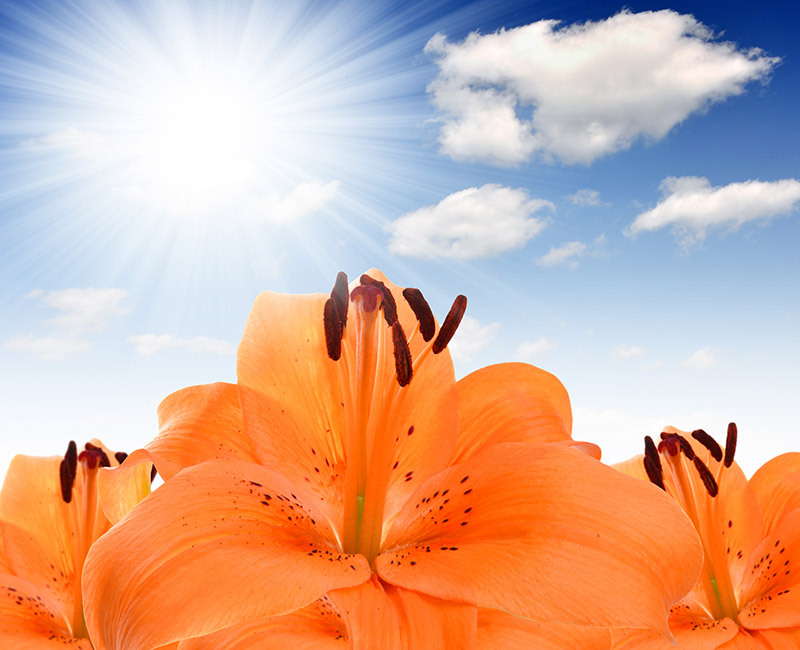Creating Stunning Hydrangeas: Essential Care Techniques
Posted on 17/08/2025
Creating Stunning Hydrangeas: Essential Care Techniques
Hydrangeas are among the most beloved and versatile flowering shrubs in the gardening world. They can transform any landscape with their spectacular, globe-shaped blooms and vibrant colors, ranging from pinks and blues to whites and purples. If you have ever dreamed of growing stunning hydrangeas in your garden, you're in the right place. This comprehensive guide covers all you need to know about achieving breathtaking hydrangea displays--from selecting the right variety to expert hydrangea care techniques that ensure lush and healthy blooms year after year.

Understanding Hydrangeas: An Overview
Hydrangeas (Hydrangea spp.) are deciduous shrubs native to Asia and the Americas. They are prized not only for their dramatic, oversized flower clusters but for their ability to adapt to a wide range of environments. Before diving into essential hydrangea care techniques, it's crucial to understand the different varieties to choose the best fit for your landscape.
Main Hydrangea Species
- Hydrangea macrophylla - Bigleaf or Mophead hydrangea, known for spectacular blue and pink blooms.
- Hydrangea paniculata - PeeGee hydrangea, famous for panicle-shaped, white-to-pink flowers and robust growth.
- Hydrangea arborescens - Smooth hydrangea, including the popular 'Annabelle,' with stunning white blossoms.
- Hydrangea quercifolia - Oakleaf hydrangea, noted for oak-shaped leaves and unique white flowers that age to pink.
Essential Hydrangea Care Techniques
The secret to creating stunning hydrangeas lies in mastering a few essential care techniques. With a little planning and the right maintenance, you can enjoy vibrant, robust blooms throughout the growing season. Here's how:
1. Selecting the Perfect Site
- Hydrangeas love morning sun and afternoon shade. Too much direct sunlight, particularly in hotter regions, can scorch the leaves and reduce bloom quality.
- Good drainage is vital. While hydrangeas enjoy moisture, they despise soggy roots, which can promote disease.
- Protection from strong winds helps prevent damage to delicate blooms.
2. Soil Preparation and Amendments
- Hydrangeas thrive in rich, well-drained soil that retains moisture without becoming waterlogged.
- Amend soil with organic matter such as compost or well-rotted manure to improve fertility, structure, and drainage.
- Test soil pH - Certain varieties, especially Bigleaf hydrangeas, show vibrant blue flowers in acidic soils (pH below 6) and pink in more alkaline conditions. You can even manipulate the bloom color by adjusting your soil pH.
3. Proper Planting Techniques
- Plant in early spring or fall, when temperatures are mild and rainfall is abundant.
- Dig a hole as deep as the root ball and twice as wide. Gently loosen the roots if root-bound.
- Place the hydrangea at its previous planting depth--too deep and it may struggle.
- Backfill with amended soil and water thoroughly.
4. Watering Techniques for Gorgeous Blooms
- Hydrangeas need consistent moisture, especially during establishment and warm weather.
- Irrigate deeply once or twice a week; avoid frequent, shallow watering that can stress plants.
- Early morning watering is best to prevent fungal problems that develop during damp nights.
- Adding mulch around the base--such as shredded bark or leaf mold--helps conserve soil moisture and keeps roots cool.
5. Fertilizing for Lush Hydrangeas
- Hydrangeas are not heavy feeders but benefit from balanced, slow-release fertilizer applied in spring as new growth emerges.
- Over-fertilization can lead to excessive leafy growth at the expense of flowers.
- For blue-blooming varieties, consider supplements like aluminium sulfate to maintain soil acidity.
6. Pruning Hydrangeas: The Right Way
Knowing how and when to prune your hydrangeas is key to encouraging vibrant blooms and maintaining the shrub's shape. Timing and method vary by species:
- Bigleaf (Macrophylla), Oakleaf (Quercifolia): Buds form on old wood--prune immediately after flowering to avoid cutting off next year's blossoms.
- PeeGee (Paniculata), Smooth (Arborescens): These bloom on new wood--prune in late winter or early spring before growth resumes.
- Remove dead, damaged, or crossed stems regardless of type.
Solving Common Hydrangea Problems
Even with the best hydrangea care, problems may arise. Here's how to identify and solve them to keep your hydrangea flowers thriving:
Leaf Yellowing or Wilting
- Likely cause: Overwatering, underwatering, or poor drainage.
- Check soil moisture and drainage, and adjust watering habits.
Lack of Blooms
- Likely cause: Incorrect pruning, cold damage to buds, or too much shade.
- Ensure correct pruning timing, protect buds in winter, and consider relocating if light is inadequate.
Pest and Disease Issues
- Common pests: Aphids, spider mites, scale insects. Address with strong water sprays, insecticidal soap, or neem oil.
- Diseases: Powdery mildew or leaf spot. Ensure good air circulation and avoid overhead watering.
Advanced Tips for Truly Spectacular Hydrangeas
-
Change flower color:
- For bluer blooms, add aluminium sulfate for acidity.
- For pinker tones, use garden lime to increase alkalinity.
- Note: White hydrangeas typically do not change color!
- Choose reblooming varieties: Some hydrangeas, like the Endless Summer(R) series, flower on both old and new wood, giving more consistent blooms.
- Deadhead spent blooms: Removing old flowers keeps shrubs tidy and may redirect plants' energy into more abundant flowering.
Designing with Hydrangeas in Your Landscape
Stunning hydrangeas can fit a variety of settings:
- Mass plantings create a breathtaking effect along fences or property lines.
- Mixed borders--pair with shade-loving perennials such as ferns, hostas, and astilbe for textural contrast.
- Specimen plant--showcase a dramatic hydrangea on its own as a focal point.
- Cut flowers--hydrangea blooms hold up well in vases and drying, making them perfect for floral arrangements.
Hydrangea Care Through the Seasons
Spring
- Fertilize at start of growth.
- Apply mulch to conserve moisture and control weeds.
- Watch for late frosts and protect developing buds with sheets if forecasted.
Summer
- Maintain regular watering, particularly during hot spells.
- Deadhead spent flowers for a neat appearance.
- Monitor for pests and diseases, treating early if noticed.
Fall
- Reduce feeding as plants prepare for dormancy.
- Leave faded flowers for winter interest and to protect buds.
- If necessary, transplant or divide older plants.
Winter
- In colder regions, protect roots with a thick mulch layer.
- For Bigleaf hydrangeas, consider wrapping plants in burlap to protect flower buds from severe cold.

Frequently Asked Questions About Hydrangea Care
How do I keep my hydrangea flowers blue?
- Maintain acidic soil conditions (pH 5.2-5.5) with aluminium sulfate, using soil tests as a guide.
Why isn't my hydrangea blooming?
- Possible reasons: Pruned at the wrong time, late spring frost damage, or not enough sun. Review care techniques and adjust as needed.
Can hydrangeas grow in pots or containers?
- Yes! Use a potting mix that retains moisture but drains freely. Water and feed more frequently, and insulate containers in winter to prevent root freeze.
Conclusion: Create Stunning Hydrangeas in Your Garden
With the right knowledge and essential hydrangea care techniques, anyone can grow a garden filled with breathtaking hydrangea blooms. Pay attention to sunlight, soil, water, and pruning, and you'll be rewarded with flowers that delight all summer long. Whether you wish to craft a perennial border, embrace cottage garden charm, or simply showcase a single dazzling shrub, these tips will ensure your hydrangeas always look their very best.
Start creating stunning hydrangeas today! With care, patience, and passion, your garden will soon be the envy of the neighborhood.
Latest Posts
Colorful Birthday Blooms that Amaze
Bring Timeless Elegance with Top 12 Long-Lasting Florals
Creating Stunning Hydrangeas: Essential Care Techniques






